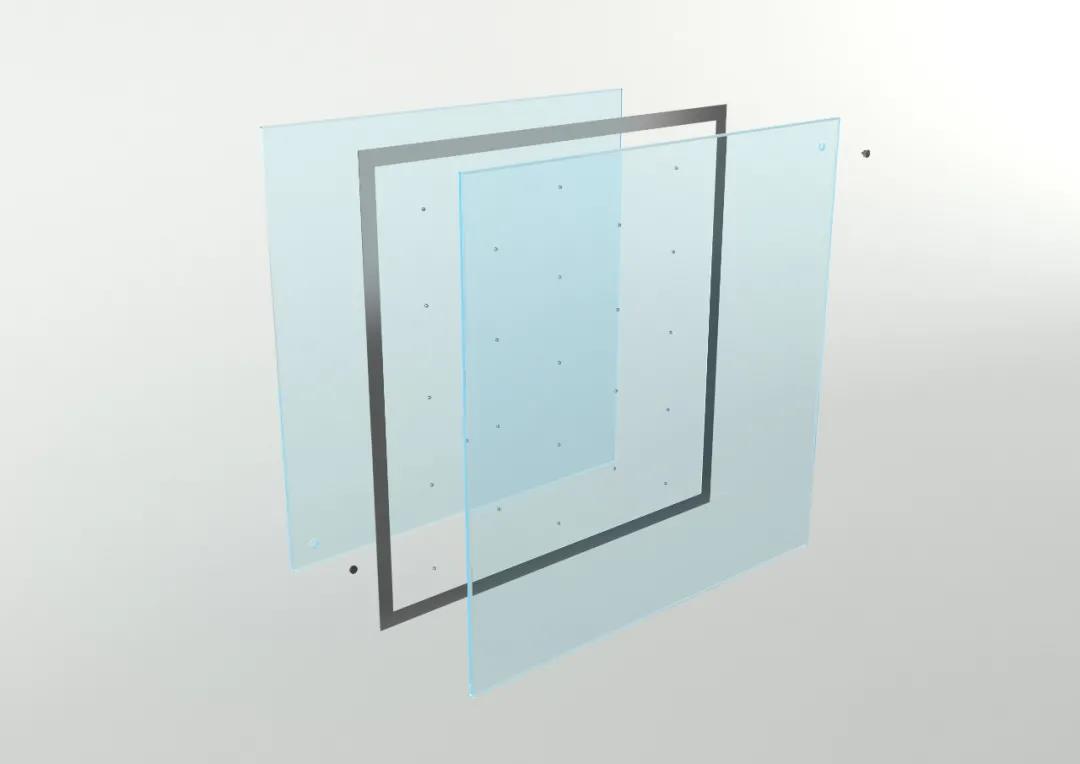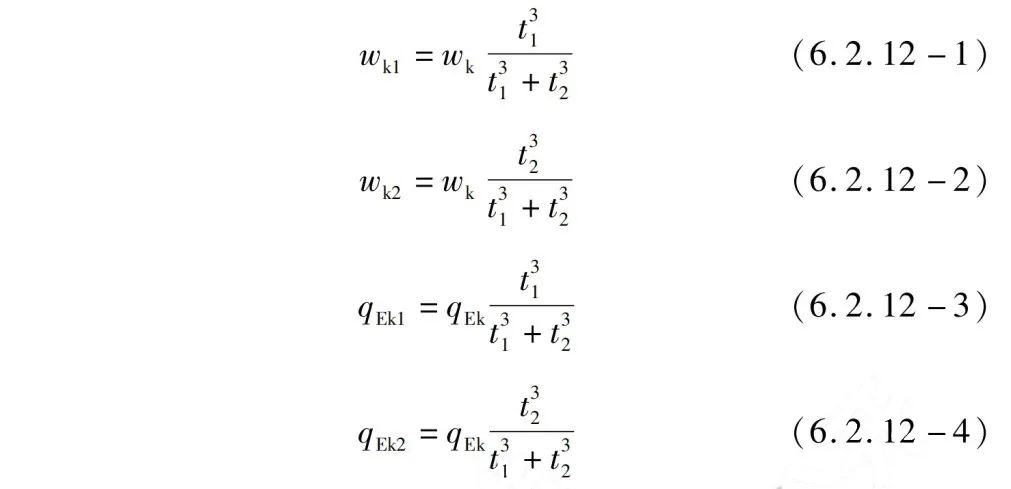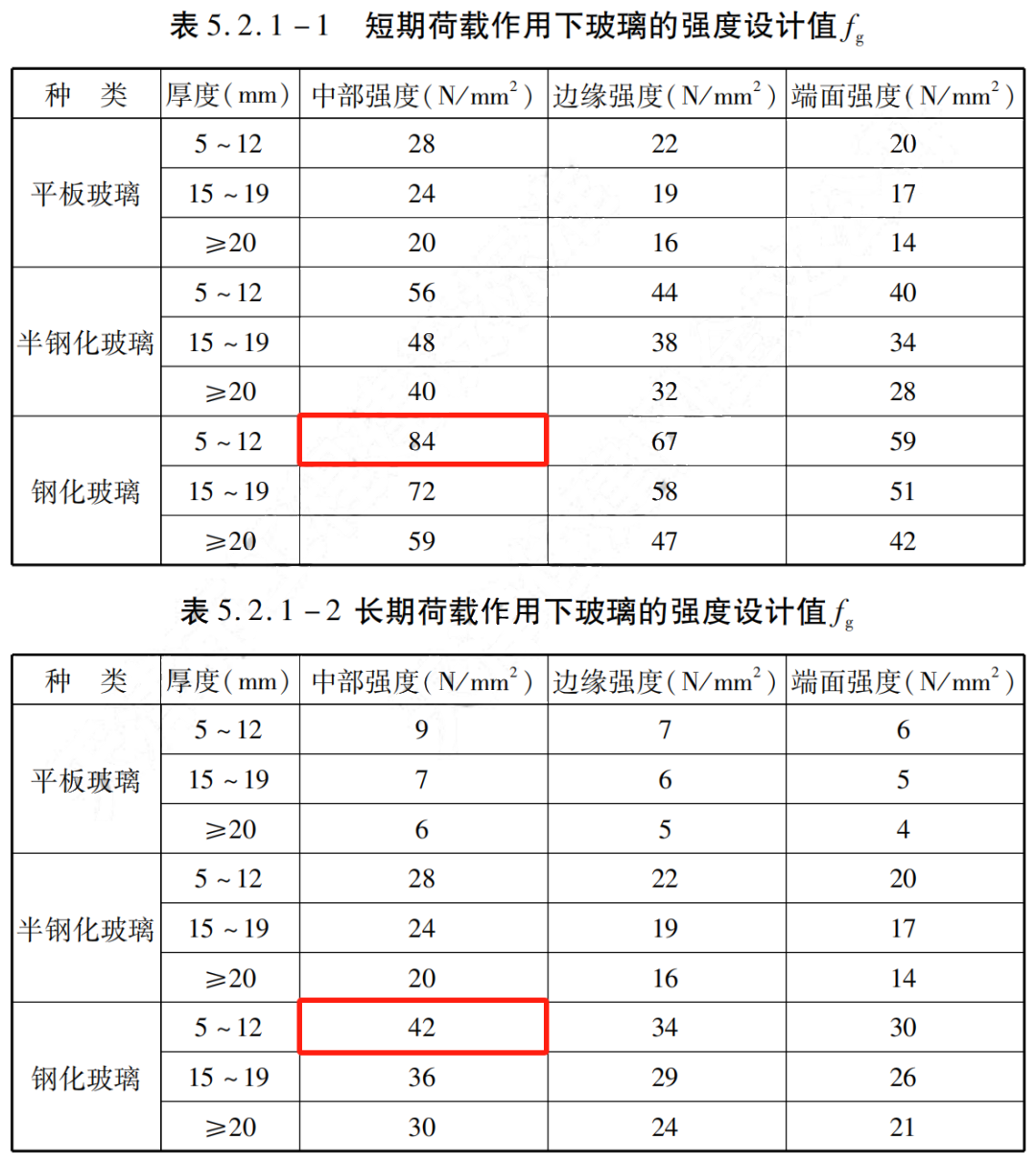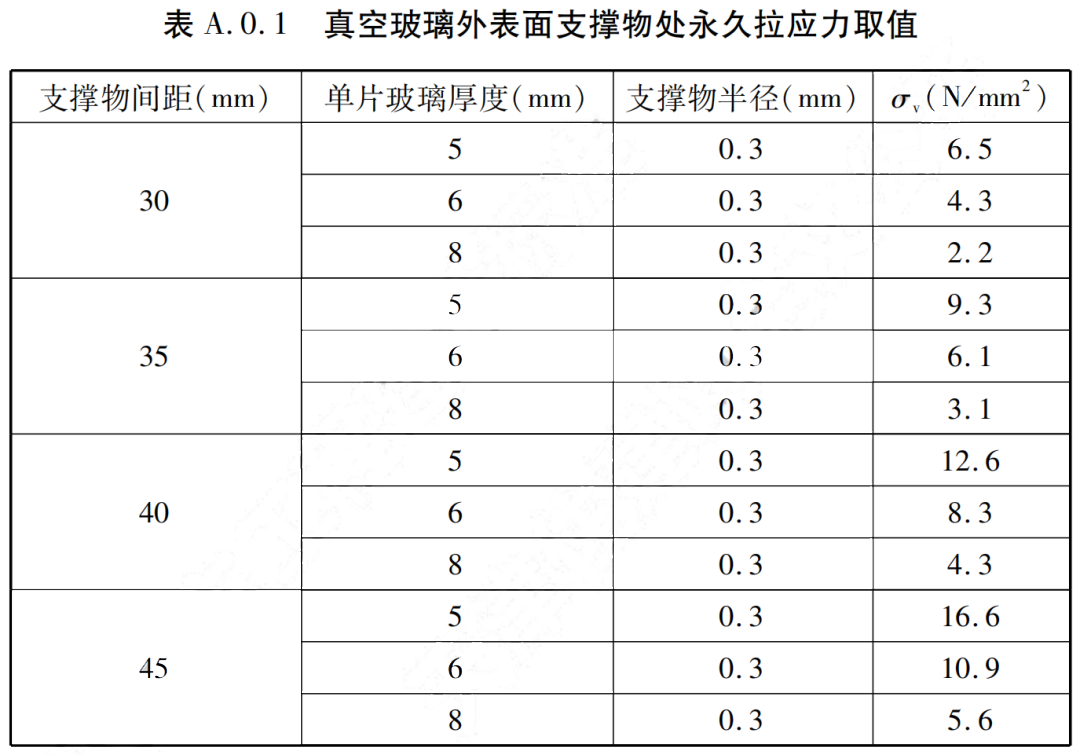Vacuum glass: how to calculate strength?

As we all know, when calculating the strength of architectural glass, the load is distributed to a single piece of glass, and the stress of the single piece of glass is calculated to see whether it exceeds the strength design value, so as to determine whether the glass strength is qualified.
Therefore, the strength calculation of architectural glass generally focuses on two issues: load distribution and strength design value; for vacuum glass, we also need to pay attention to the individual problems of glass when it is subjected to an atmospheric pressure (vacuum) for a long time.
First, let's look at load distribution.
Article 6.2.12, paragraph 1 of DB 29-221-2013 clarifies the load distribution problem of vacuum glass. Specifically, the wind load and seismic action acting on vacuum glass can be distributed to two pieces of glass according to the following formula:
The content is consistent with the load distribution method of laminated glass in Article 6.1.4 of JGJ 102-2003 "Technical Specifications for Glass Curtain Wall Engineering", and both are related to the cube of the glass thickness.
I personally think that the reasonable explanation is that when vacuum glass and laminated glass are subjected to wind load and earthquake, laminated glass transfers load through film, and vacuum glass transfers load through support. Both pieces of glass are deformed with equal deflection, so the load distribution method of the two can be considered to be consistent.
Then, there is the problem of strength design value.
We know that the strength design value of glass is generally divided into strength design value under short-term load and long-term load. The value is shown in Article 5.2.1 of DB 29-221-2013, as follows:
This table actually comes from Articles 4.1.9 and 4.1.10 of JGJ 113-2015 "Technical Code for Application of Architectural Glass", or more strictly speaking, from JGJ 113-2009.
It can be seen that the strength design value of glass under long-term load is only half of the strength design value under short-term load.
So what is short-term load and what is long-term load?
Simply put, the wind load and earthquake action borne by glass are short-term loads, while the self-weight borne by horizontally placed glass is a long-term load, such as skylights, awnings, horizontal skylights, etc. This is also the basis for the strength design value of skylight glass in Table 5.2.7 of JGJ 255-2012 "Technical Code for Skylights and Metal Roofs".
Here is a problem. The pressure between the two sheets of vacuum glass is only 0.01Pa, and both sides are an atmospheric pressure of 101325Pa (≈0.1 MPa), which is far higher than our usual self-weight, wind load and earthquake action. Therefore, vacuum glass itself meets the conditions for bearing long-term loads, and the strength design value should be taken under long-term loads.
This leads to the third question. How should the stress of vacuum glass itself under long-term loads be evaluated?
Appendix A of DB 29-221-2013 gives the permanent stress values at the outer surface supports of vacuum glass very considerately, see the table below.
It can be seen that the value of permanent stress at the support of the outer surface of vacuum glass decreases with the increase of glass thickness and increases with the increase of support spacing, which is consistent with our simulation conclusion.
The author also conducted finite element simulation of the stress of vacuum glass under a long-term atmospheric pressure load. The simulation result of a certain maximum stress is shown in the figure below.
Of course, since the selection of edge sealing and support materials, mesh division, etc. cannot be exactly the same, the results are somewhat different from the values given in the table, but they are also relatively close. If you are interested, you can continue to study.
Then how should the strength design value under this long-term load and the permanent stress value at the support of the outer surface of vacuum glass be applied?
The third paragraph of 6.2.12 in DB 29-221-2013 clearly states that "the permanent tensile stress at the support of the outer surface of vacuum glass should be considered when calculating the maximum stress design value, and the permanent tensile stress can be taken according to Appendix A of this specification."
That is to say, when calculating the strength of vacuum glass, after calculating the stress values under wind load and earthquake action, we should also add the permanent tensile stress value given in Appendix A above, and the sum of the two cannot exceed the strength design value.
Of course, short-term loads (wind loads, earthquake effects) and long-term loads (one atmosphere) are considered here. Should the strength design value be taken under short-term loads or long-term loads? Conservative considerations suggest taking the strength design value under long-term loads.
Okay, let's make a brief summary:
The strength calculation of vacuum glass has been involved in DB 29-221-2013 "Technical Specifications for Building Curtain Wall Engineering in Tianjin".
Issues to be paid attention to in the strength calculation of vacuum glass include: load distribution, strength design value, and local permanent stress under long-term atmospheric pressure.
The load distribution method of vacuum glass is the same as that of laminated glass; vacuum glass bears one atmosphere of pressure for a long time, which meets the conditions for bearing long-term loads, and the strength design value should be taken as the strength design value under long-term loads.
DB 29-221-2013 gives the permanent stress value at the outer surface support of vacuum glass. When calculating the strength, after calculating the stress value under wind load and earthquake action, the permanent tensile stress value should also be added. The sum of the two cannot exceed the strength design value under long-term load.





